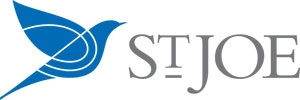By: Yale Bock
“The whole is greater than the sum of its parts.”: – Aristotle.
When one is in their youth, the issue of searching for a companion is often at the top of one’s mind. The libido can take precedence over anything else, especially if there is a certain chemistry that clicks with another person. It is in this spirit that marriages can be the natural progression of this kind of relationship. In combination, both people find more happiness together than they would apart. Naturally, the next step would be to procreate and add a family member to this happy union. We can see that Aristotle did not necessarily refer to personal relationships when he issued his comment about the whole being greater than the parts. How does this apply to investing?
First, companies often seek out other enterprises to become larger, more efficient, more profitable, or improved entities by virtue of adding product lines, intellectual capital, additional assets, or some combination thereof. Second, one tactic of investment is to identify companies where there is a large quantity of assets or operating businesses that the investment community is not recognizing for their total worth. The term given to this style is the sum of the parts investing. Now, let’s consider what is taking place in the world, which has many investors agog over the possibilities. It is the tokenization of every asset that can be sliced and diced.
What exactly is tokenization? Tokenization is the process of converting the ownership rights of any asset into a digital token on a blockchain. The concept of “tokenization of everything” is accelerating as institutions and investors digitize a vast array of assets, from real estate to stocks.
The underlying principle involves using smart contracts on a blockchain to create and manage these digital representations. Each token contains the rules and rights of ownership for the asset it represents. The range of assets that can be tokenized is comprehensive, encompassing financial assets, real estate, intangible assets (intellectual property- including patents, music royalties, carbon credits, and renewable energy), collectibles, and currencies. Proponents argue that the benefits of tokenization are improved liquidity with fractional ownership, which can be subdivided as small as one can imagine, and improved transparency with every record on the blockchain. All payments, like dividends, are automated for faster settlement and lower minimum investments, providing much wider access to previously restricted assets.
The move to digitize everything allows banks, brokers, and custodians to offer every kind of transaction possibility in one place. You are seeing it happen at Fidelity, Schwab, Chase, BlackRock, Blackstone, and many others, giving access to digital assets like crypto-related tokens and stablecoins, along with stocks, bonds, cash, indexes, CDs, and in retirement accounts. From my perspective, a key issue is reducing costs and settlement times for those responsible for custody. From an investment point of view, just because an asset is tokenized and made more accessible does not make it more valuable. More people may be able to buy it at smaller dollar amounts, but the mere fact that it can be purchased more easily does not make the underlying economic value increase over time. In many cases, more assets are issued each year, which makes the threshold for acceptable levels of growth higher. If you split a pie into more pieces, it does not make the pie taste better or allow the owner to sell more pies. It makes it easier to buy one piece, but if the pie is not delicious and does not look good, people are not going to buy it.
If we take this even further, access to IPO’s, private company assets like venture capital-based startup companies, private credit (loans and debt instruments), secondary debt underwritings, private equity portfolio companies which are not public, futures, forwards, swaps, options, commodity linked instruments, bank accounts, frequent flyer and customer rewards, and who knows what else, are all there for slicing and dicing into monetizable assets. The world is entering the era of tokenization, whether we like it or not. Choosing carefully takes on even greater importance.


Originally posted on November 1, 2025 on YH&C Newsletter and blog
PHOTO CREDIT: https://www.shutterstock.com/g/Studious
VIA SHUTTERSTOCK
DISCLOSURES:
Y H & C Investments may have positions in companies mentioned in this newsletter. Nothing in the newsletter should be taken as an offer to buy or sell individual securities. It is the responsibility of each investor to research the investments mentioned so they can decide on the appropriateness and suitability of the investments consistent with their risk tolerance, risk constraints, and return objectives.


